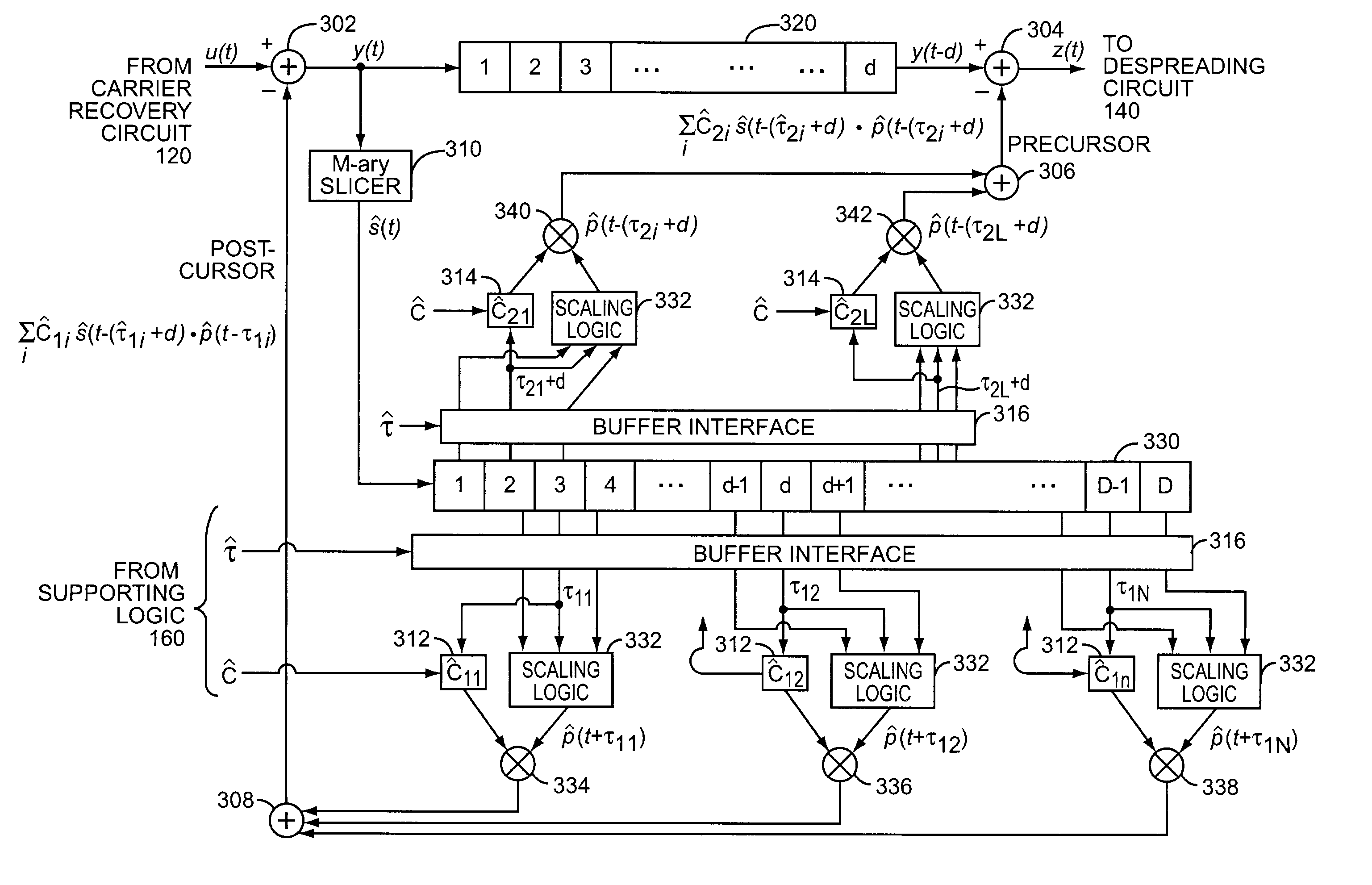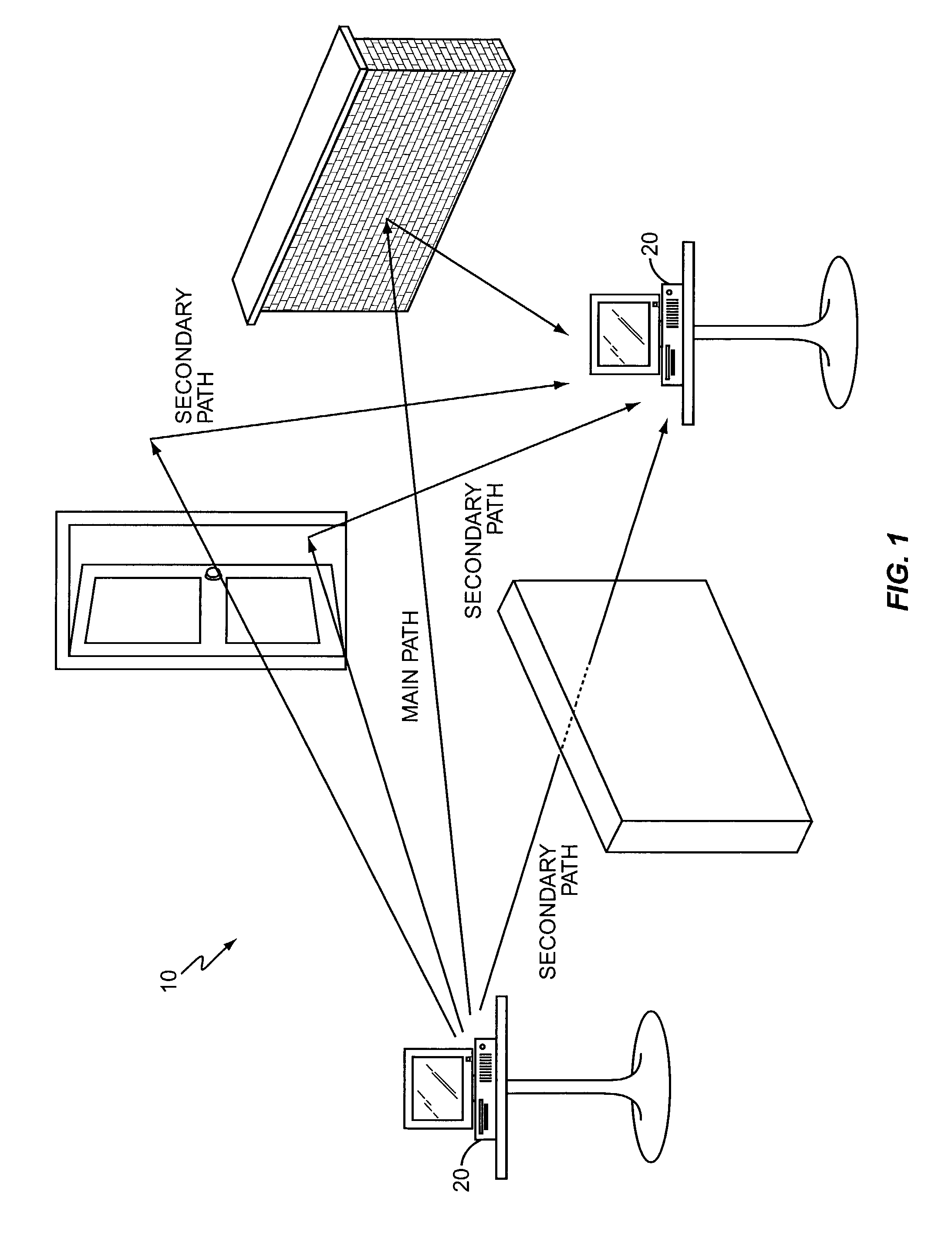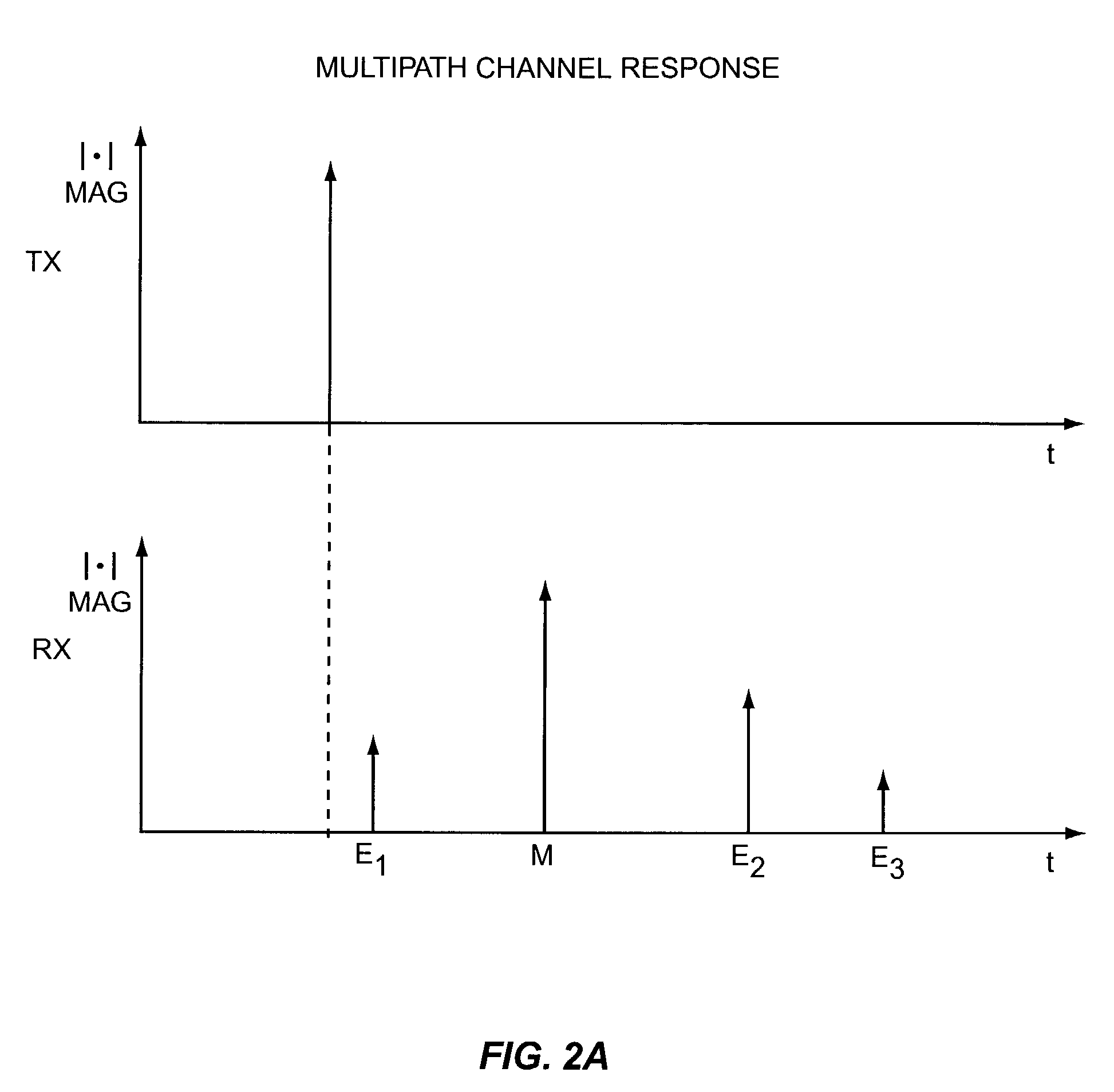Method and apparatus for multipath signal compensation in spread-spectrum communications systems
a multipath signal and spread spectrum technology, applied in the field of dsss communication systems, can solve problems such as complicated multipath signal processing, code with poor correlation properties, and particularly problematic interference, and achieve the effect of multipath signal compensation
- Summary
- Abstract
- Description
- Claims
- Application Information
AI Technical Summary
Benefits of technology
Problems solved by technology
Method used
Image
Examples
Embodiment Construction
[0041]The embodiments set forth below represent the necessary information to enable those skilled in the art to practice the invention and illustrate the best mode of practicing the invention. Upon reading the following description in light of the accompanying drawing figures, those skilled in the art will understand the concepts of the invention and will recognize applications of these concepts not particularly addressed herein. It should be understood that these concepts and applications fall within the scope of the disclosure and the accompanying claims.
[0042]FIG. 1 illustrates a wireless communications environment 10 subject to multipath interference. While FIG. 1 depicts two PCs 20 in wireless communications with each other, as might be expected in a wireless LAN environment, the present invention may be advantageously applied in any DSSS communications systems subject to multipath interference. As illustrated, multipath signals arise from intervening obstacles between a transm...
PUM
 Login to View More
Login to View More Abstract
Description
Claims
Application Information
 Login to View More
Login to View More - R&D
- Intellectual Property
- Life Sciences
- Materials
- Tech Scout
- Unparalleled Data Quality
- Higher Quality Content
- 60% Fewer Hallucinations
Browse by: Latest US Patents, China's latest patents, Technical Efficacy Thesaurus, Application Domain, Technology Topic, Popular Technical Reports.
© 2025 PatSnap. All rights reserved.Legal|Privacy policy|Modern Slavery Act Transparency Statement|Sitemap|About US| Contact US: help@patsnap.com



